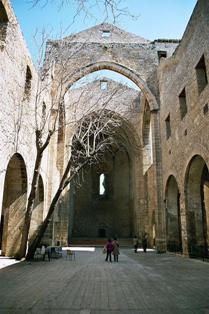Great cultural and intellectual movements in Europe are attributed to its connection with Islamic ideas, which are also considered as the beginning of Italian Renaissance. Read our guide for more facts and information…
The history of Islam in Italy dates as far as the ninth century, when Sicily and parts of Italy came under Muslim conquest as North African states waged wars to annex the region. Arab Muslims fought against the Byzantine Empire, shortly after the inception of Islam, but their invasion was short-lived. However, the Muslim reign in Sicily made a lasting impact on the European culture and thought.
Phases Of Islamic History In Italy
The thirteen-century old history of Islam in Italy began after Arab forces landed on the Sicilian coast in 827 and subsequently conquered large parts of southern Italy. The conquest of Sicily was incited by Euphemius, a Byzantine admiral, who was at odds with Emperor Michael II. Retaliating to a punishment, he occupied Syracuse, but his conquest was short-lived as he was driven to Africa to the court of Ziyadat Allah, who was the Aghlabid Emir of Al Qayrawan, Tunisia. He offered Sicily’s reign to Ziyadat Allah in exchange for his safety.
Ziyadat Allah agreed to capture Sicily and give control to Euphemius for an annual tribute. The conquest was led by Asad ibn al-Furat, with a Muslim force of 100 ships, 700 cavalry and 10000 infantry, which arrived at Mazara. Thus in 827, they waged war with the Byzantine troops, and the resultant Aghlabid victory set off the Arab period in Italy. This was the first phase of Islamic presence, which lasted till the beginning of the thirteenth century. The Arabs were forced out of the nation by Norman troops. The second phase began in the 1980s marked by the entry of a significant number of Muslim immigrants into the country.
Muslim Foothold on Sicily
After attacking Italy’s Adriatic Coast, the Arabs went on to occupy Brindisi in 838 though temporarily, and then advanced past the Adriatic and Tyrrhenian coasts. Later, in 841 they took Bari, which remained as their base for the next three decades. In 846, they advanced to Rome and sacked the church of St Peter, but did not take the city.
Though Arab Muslims could not gain a lasting hold on the mainland, they settled in Sicily. The Arabs and Berbers, who made a gradual conquest of Sicily from 827 onwards, formed the Emirate of Sicily in 965. Two centuries of their rule introduced Islamic arts and thoughts to Sicily. After the Normans took Sicily in 1091, Arabic remained the language of science. Sicily was a channel for transmission of Arab ideas into Italy, setting off the Italian Renaissance.
Intellectual and Cultural Influence of Islam
The dominance of Arabs in southern Europe, including Italy, is said to have created an intellectual and cultural revival in the continent. Many scholars opine that Islam brought about a transformation in the intolerant Europe of the medieval era, and introduced a modern, scientific and rationalist society. The Arabs studied and translated the works of great people like Aristotle, introduced astronomy, optics, Algebra and several branches of medicine.
It is said that the knowledge of the Arabic language enabled Christian scholars to save important pre-Christian texts. At the same time, several features of medieval Islam, including arts, economics, philosophy and science were introduced, eventually leading to the rebirth of European thought.
After the Norman Conquest established Roman Catholicism in Sicily, where Christianity was prominent during the Byzantine rule, reconversion and latinazation wiped out Islam in Sicily. The Ottoman Empire, which later tried to conquer Italy, could not succeed.





